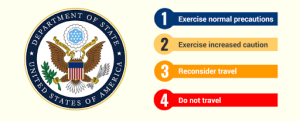By John N. Galgiani & Raymond L. Woosley | Arizona Republic
At a time when conservative estimates have valley fever’s annual economic impact on Arizona at a quarter-billion dollars, we learn that the price of one of the only treatments has increased 1,000 percent.
Manufacturers, responding to “market forces,” have dramatically increased the price of the drug fluconazole through the roof (“High cost of valley fever: Price of drug skyrockets,” Republic, Nov. 17). But there is no obvious reason for the increase, other than the manufacturers are simply charging what the public will bear.
Experience has shown that higher prices for medications mean that ill patients don’t have access to important drugs. This was one of the main reasons the Medicare program adopted a “drug benefit.” Even with a drug plan, a higher co-pay causes some patients to abandon their prescriptions at the pharmacy, choosing to go without their medicine and its potential benefit.
Why should Arizonans care about this? Because two-thirds of all valley fever infections in the country occur in Arizona, mostly along the 150 miles of Interstate 10 from Tucson to Phoenix. In this “valley fever corridor,” the disease causes one out of three cases of pneumonia, thousands suffer weeks or years of disability, and about 100 Arizonans die from complications each year.
The Arizona Department of Health Services reported that hospitalization costs for valley fever in 2012 were more than $100 million, double what they were a decade ago. This figure does not include the additional costs of outpatient care. Other studies have shown that most people lose at least two weeks of work when they develop valley fever. All told, the annual economic impact on the state is easily a quarter-billion dollars.
With the growing recognition of the significance of valley fever on the state’s public health and economy, isn’t it time to take this bull by the horns?
Valley fever, which infects both humans and animals, is caused by a fungus that grows in arid soils. For many other fungal infections, fluconazole treatment is only needed for a few days and a large increase in cost, while troubling, is not catastrophic. However, valley fever is not like most other fungal infections and requires fluconazole therapy for many months, and sometimes a lifetime. Therapy for these people and for animals now costs many thousands of dollars per year, potentially putting life-saving treatment out of reach for many.
Long courses of fluconazole are needed to treat valley fever because the drug doesn’t kill the fungus; it just stops it from growing. Even though valley fever is endemic in Arizona and some other western states, it is still an “orphan illness” on the national level — one that is not very common compared with illnesses such as diabetes, heart disease or cancer. Because it’s a small market, valley fever doesn’t have the necessary “dollar potential” to catch the attention of the pharmaceutical industry that prefers to focus on developing blockbuster drugs.
Obviously, we need a better medicine that works more quickly. In fact, there is a promising new medicine in clinical development at the Valley Fever Center right now. This drug, called nikkomycin, has been shown to kill the valley fever fungus in laboratory infections and offers hope of a cure. With a drug that eradicates the infection, early treatment could prevent the complications altogether.
Currently, nikkomycin development is sponsored by the University of Arizona because no pharmaceutical company has accepted the responsibility. The drug has already undergone extensive safety testing and, within a few years, could be ready for Food and Drug Administration review, assuming more investment in the research is found. Given the importance of valley fever to Arizona, local investment to accelerate nikkomycin’s development might not only be profitable but also good for the state’s public health.
St. Joseph’s Hospital and Medical Center and the University of Arizona partnered to create a new Valley Fever Center in Phoenix to work closely with the Valley Fever Center in Tucson and other scientists in the state. The Phoenix center is also collaborating with Arizona State University to develop case-management programs and with Northern Arizona University to improve rehabilitation by incorporating novel physical-therapy approaches.
The center opened a year ago with the financial support of generous Phoenicians and the Arizona Community Foundation, who made lead gifts. They have invited other individuals, foundations, corporations and large Arizona employers to help expand the center to reach its full potential. In addition to helping patients with available treatments, the center can be a place to test new therapies, like nikkomycin, and even vaccines that could prevent valley fever.
The price spike for fluconazole should be a wake-up call for Arizonans. We should not remain at the mercy of those who only care about developing expensive and highly profitable drugs. If something is going to be done, we will have to do it ourselves.
Thankfully, we have the medical expertise and a very promising drug candidate here, in Arizona. We now need the funding so that the Valley Fever Center in Phoenix can perform the testing of nikkomycin and make it available for patients.
Dr. John N. Galgiani is director of the Valley Fever Center in Phoenix. Dr. Raymond L. Woosley is president of AZCERT Inc. More information is available at vfce.arizona.edu or 602-406-8253.
Back to News
